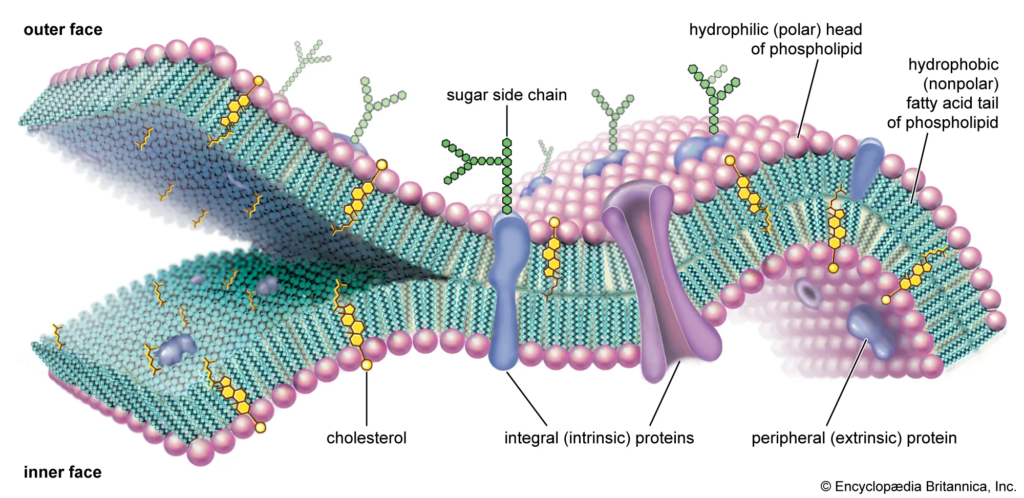Understanding the cell membrane’s operation within a cell scope is crucial for appreciating how cells function on a microscopic level. The cell membrane, also known as the plasma membrane, is one of the most vital components of a cell. It plays an essential role in regulating what enters and leaves the cell, maintaining the cell’s integrity, and facilitating communication between cells.
This article delves into the intricate mechanisms of the simcell membrane, its composition, functions, and how it operates within a cellular scope (microscope). By understanding the dynamics of the simcell membrane, we can gain insights into broader biological functions and the cutting-edge scientific tools that allow us to explore these processes in detail. This article also explores related terms and provides answers to frequently asked questions to enrich your understanding.
What is the Simcell Membrane?
The simcell membrane is an advanced model of the biological membrane found in cells. The term “simcell” generally refers to a simulated cell used in laboratory studies or research, which mimics the properties of a real cell membrane. In this context, it provides a more controlled and observable system for scientists to study cellular processes in depth, often within the constraints of a lab setting and using powerful microscopy tools.
The membrane itself is a dynamic structure primarily composed of lipids, proteins, and carbohydrates, with a fluid-like consistency. It surrounds the cell, providing it with structural support and regulating the movement of substances in and out. The simcell membrane functions similarly to biological membranes in real cells, albeit within a controlled experimental system.

Structure of the Simcell Membrane
Understanding the structure of the simcell membrane helps explain how it works within the cell scope. The membrane is composed of several key components:
- Phospholipid Bilayer:
The core structure of the membrane is a bilayer of phospholipids, where the hydrophilic (water-attracting) heads face outward, and the hydrophobic (water-repelling) tails face inward. This arrangement is crucial for the selective permeability of the membrane. - Proteins:
The membrane contains embedded proteins, including integral and peripheral proteins. Integral proteins span the membrane and facilitate the transport of molecules, while peripheral proteins are attached to the surface and play a role in cell signaling. - Carbohydrates:
Carbohydrates are attached to proteins and lipids on the exterior of the membrane, forming glycoproteins and glycolipids. These molecules are involved in cell recognition, signaling, and communication. - Cholesterol:
Embedded within the phospholipid bilayer, cholesterol molecules help maintain the membrane’s fluidity, ensuring that it is neither too rigid nor too fluid.
Functions of the Simcell Membrane in the Cell Scope
When observing the simcell membrane through a cell scope, several critical functions can be noted:
1. Selective Permeability
One of the fundamental functions of the simcell membrane is its selective permeability. It controls which substances can enter or leave the cell, allowing nutrients to pass through while blocking harmful substances. The membrane accomplishes this through various mechanisms such as passive diffusion, facilitated diffusion, and active transport.
- Passive Diffusion: Molecules move from an area of high concentration to low concentration without energy expenditure.
- Facilitated Diffusion: Larger or charged molecules require the assistance of membrane proteins to cross.
- Active Transport: Molecules are transported against their concentration gradient with the help of energy (ATP).
2. Structural Support
The membrane plays a crucial role in maintaining the cell’s shape. It acts as a barrier, protecting the interior of the cell from external stresses and providing structural integrity.
3. Cell Communication
The simcell membrane is equipped with receptors that allow cells to communicate with each other. This is particularly important in multicellular organisms, where cells must coordinate their activities to function as a whole. Receptor proteins in the membrane bind to signaling molecules (e.g., hormones), triggering a cascade of intracellular reactions.
4. Endocytosis and Exocytosis
Endocytosis is the process by which the membrane engulfs extracellular material and brings it into the cell. Exocytosis, on the other hand, is the process of expelling substances from the cell. Both processes are essential for nutrient uptake, waste removal, and intercellular communication.
How the Simcell Membrane is Observed in the Cell Scope
Using advanced microscopy techniques, such as electron microscopy or fluorescent microscopy, the simcell membrane can be observed in incredible detail. These tools allow scientists to study the membrane’s structure, interactions with other molecules, and its role in cellular processes.
Also Read: Class-30x.us: A Comprehensive Guide
Electron Microscopy (EM)
EM is commonly used to study the simcell membrane’s ultrastructure. The high resolution of electron microscopes enables researchers to observe the fine details of the lipid bilayer and the proteins embedded within it.
Fluorescent Microscopy
Fluorescent microscopy utilizes fluorescent dyes that bind to specific components of the membrane, allowing scientists to track the movement and interaction of membrane proteins and lipids in real-time. This technique is particularly useful in studying membrane dynamics during processes like endocytosis.
Significance of Simcell Membrane in Research and Biotechnology
The simcell membrane model has significant applications in research and biotechnology. By mimicking the natural properties of a biological membrane, scientists can study cellular processes in a more controlled environment. Some of the key areas of interest include:
1. Drug Delivery Systems
The simcell membrane can be used to develop more efficient drug delivery systems. By understanding how drugs interact with the cell membrane, researchers can design more effective delivery mechanisms for targeted therapy.
2. Membrane Proteins and Disease
Many diseases, including cancer, diabetes, and neurodegenerative disorders, are linked to malfunctioning membrane proteins. Research on the simcell membrane provides valuable insights into these conditions and aids in the development of therapeutic strategies.
3. Synthetic Biology
In synthetic biology, the simcell membrane is an essential component of creating synthetic cells. By understanding the properties of cell membranes, researchers can design artificial cells for various applications, such as biosensors or biofuel production.
Also Read: Application Control Engine: A Comprehensive Guide
FAQs about When the Simcell Membrane in the Cell O Scope
What is the primary role of the simcell membrane?
The primary role of the simcell membrane is to regulate the movement of substances into and out of the cell, maintaining cellular integrity and enabling communication with other cells.
How is the simcell membrane different from a real cell membrane?
The simcell membrane is a simplified model of a biological membrane, typically used in laboratory settings for research purposes. While it mimics the structure and function of real cell membranes, it is more controlled and may not exhibit all the complexities found in natural cells.
What is the significance of the phospholipid bilayer in the simcell membrane?
The phospholipid bilayer forms the fundamental structure of the simcell membrane. Its hydrophobic interior acts as a barrier to most water-soluble molecules, while the hydrophilic exterior allows for interactions with the surrounding environment.
How does the simcell membrane contribute to cell communication?
The simcell membrane contains receptor proteins that allow cells to receive signals from their environment, facilitating communication with other cells and enabling cellular responses to external stimuli.
How does microscopy help in studying the simcell membrane?
Microscopy techniques such as electron microscopy and fluorescent microscopy allow scientists to observe the detailed structure and function of the simcell membrane. These tools help in understanding its role in cellular processes and its interactions with other molecules.
Conclusion: The Simcell Membrane’s Importance in Cellular Function
When the Simcell Membrane in the Cell O Scope , The simcell membrane plays a pivotal role in maintaining the cell’s integrity, regulating the movement of substances, and facilitating communication between cells. Its detailed study within the cell scope using advanced microscopy tools helps scientists gain critical insights into cellular processes that are fundamental to biology and medicine. Whether in drug development, disease research, or synthetic biology, the simcell membrane remains an indispensable area of focus in the quest for scientific discovery.
By understanding the dynamics of the simcell membrane, we unlock new possibilities for advancing technology, medicine, and biotechnology, making it a subject of continuous exploration and innovation.
